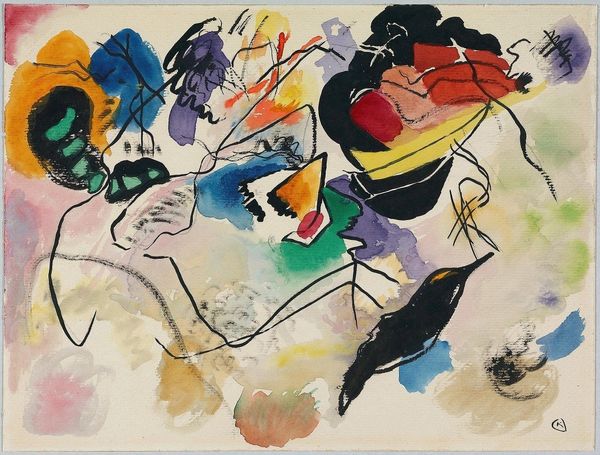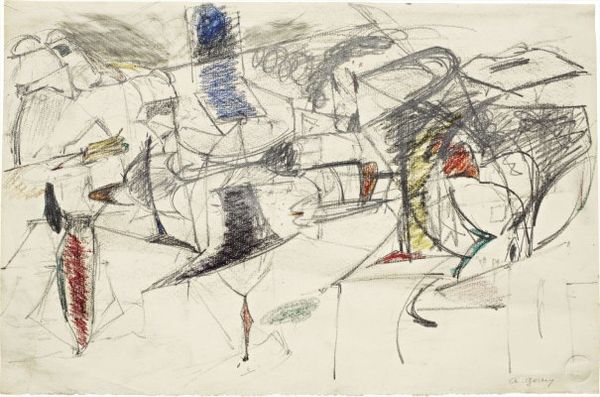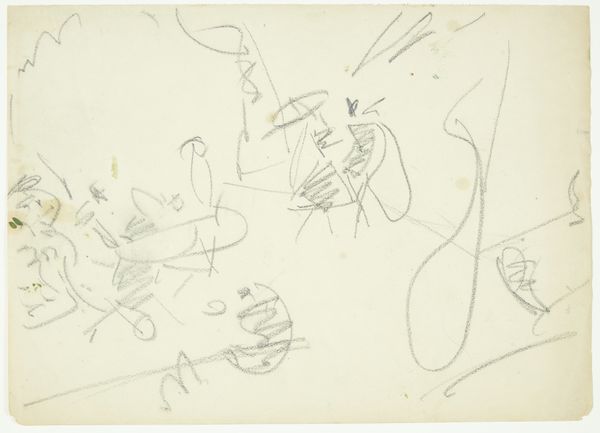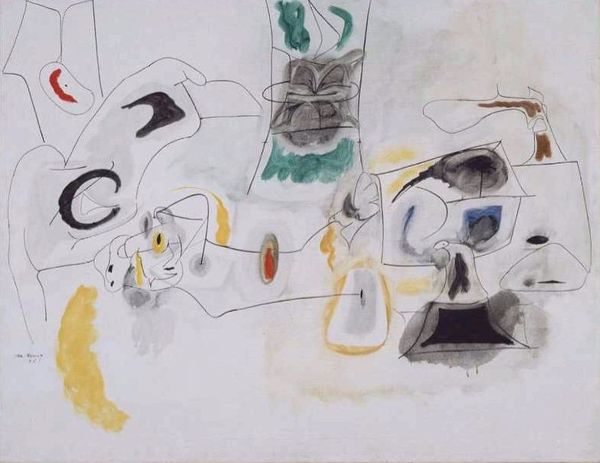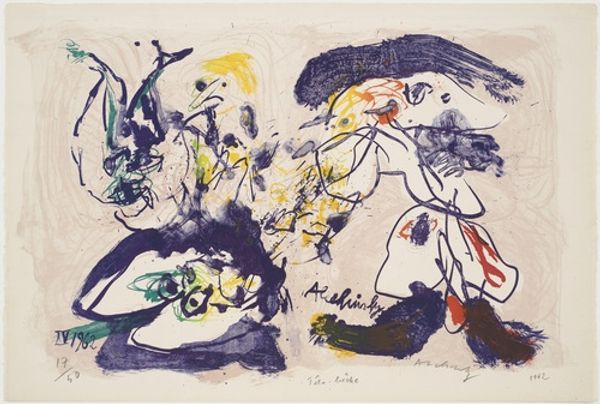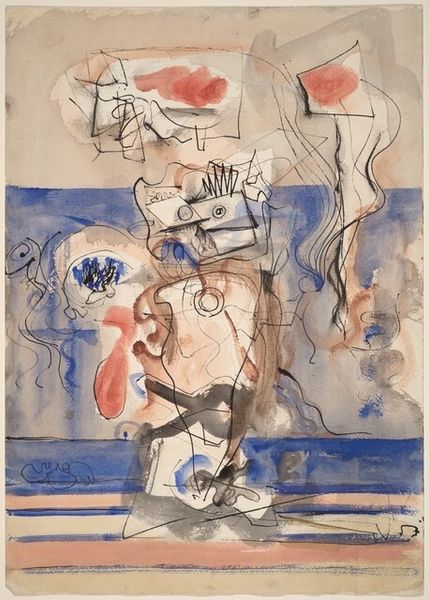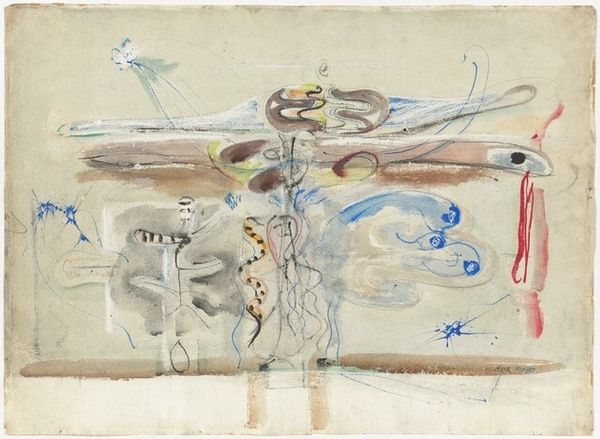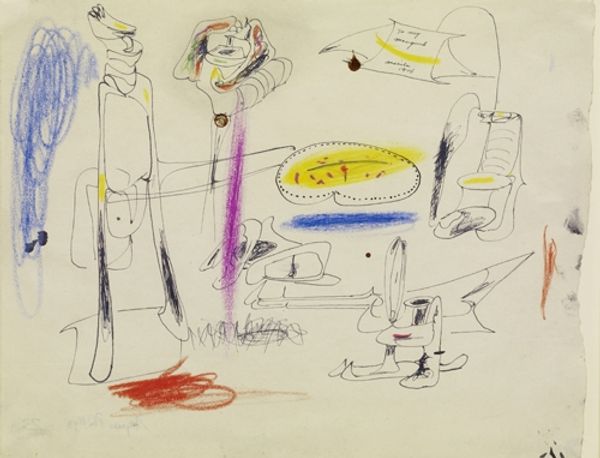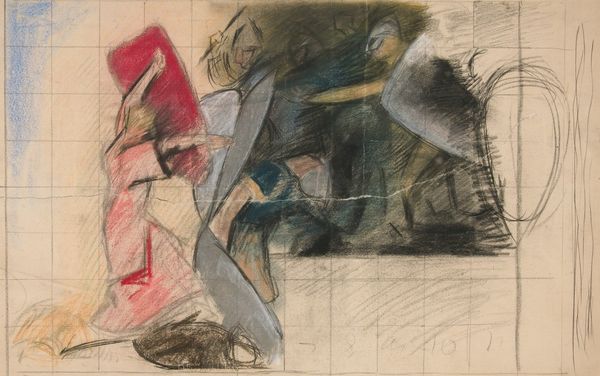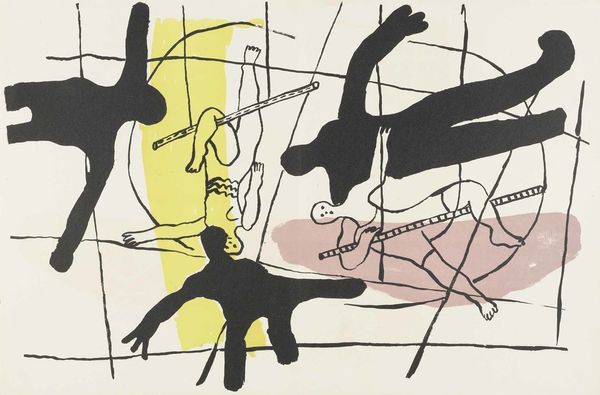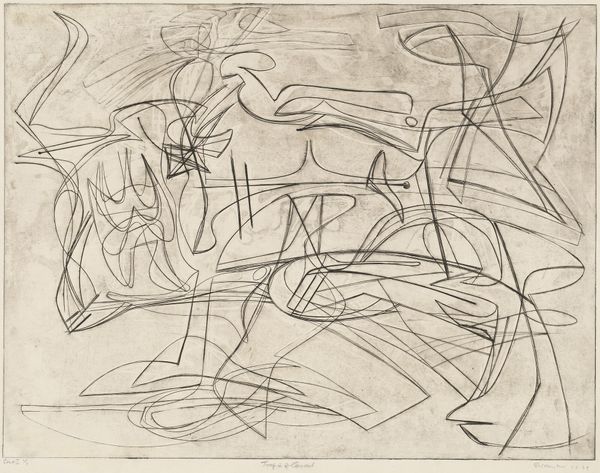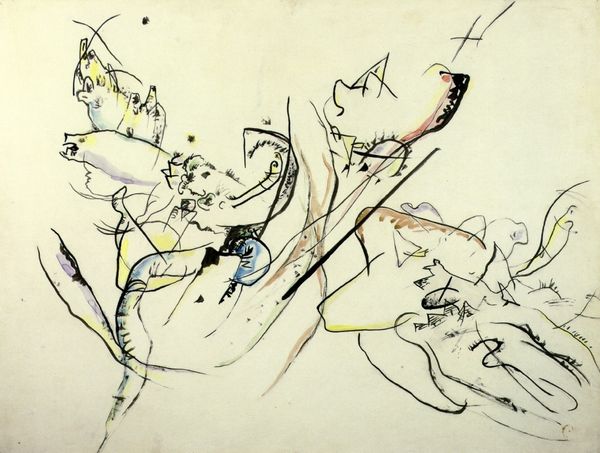
drawing, watercolor
#
drawing
#
watercolor
#
expressionism
#
abstraction
#
line
Copyright: Public Domain
Curator: Looking at Wassily Kandinsky's "Untitled (Improvisation)" from 1911-1912, done with watercolor and drawing techniques, I immediately feel this nervous energy, like an orchestra tuning up before a performance. It's exciting and slightly chaotic. Editor: Exactly! Chaos is definitely a part of it. Those fractured shapes and lines evoke, for me, primal urges breaking to the surface. I mean, we're at the cusp of World War I, right? Curator: Precisely. Kandinsky was deeply interested in the spiritual in art, you know, in expressing inner emotional states. Editor: The way the watercolor bleeds, almost uncontrolled in places, echoes that turmoil. Is that intentional do you think, a liberation from traditional form representing, like, a psychic landscape? Curator: I like that "psychic landscape." Yes, I feel he's mapping interiority. He saw synesthesia as integral to artmaking— that sounds and colours evoke emotions – so this “improvisation” is trying to directly render emotion, not a thing in the world. Editor: Yes! See, I see a skull emerging faintly from that brown smudge at the bottom corner, shadowed and tucked into the earth with a hint of dread, as a memory we repress or avoid. This symbol, placed beneath layers of unconscious experience, highlights mortality. What a moment in history to explore oblivion! Curator: Oh, that's so interesting – I hadn't seen it. I love that the work can be both free-flowing and also invite this level of layered interpretation. Editor: That's where art history thrives! We impose layers on layers as the meaning morphs through culture. Curator: The emotional core of this "Improvisation" – despite its abstract form – becomes more legible through shared impressions, which is lovely. Editor: It becomes a space we create between one another – mirroring what’s happening in our subconscious from the depths of history and experience.
Comments
stadelmuseum about 2 years ago
⋮
In the years leading up to World War I, Kandinsky’s compositions became increasingly abstract. Now we frequently encounter isolated, strongly reductive motifs in his works, for example the rowboat, complete with rowers, at the centre. Kandinsky was seemingly free in his combinations of representational fragments such as this one with each other and, sometimes, with completely abstract elements. As vehicles of 'inner sounds', as sensory values, the individual pictorial components were to make spiritual-emotional reality tangible. For Kandinsky, true art lay beyond the visible.
Join the conversation
Join millions of artists and users on Artera today and experience the ultimate creative platform.
